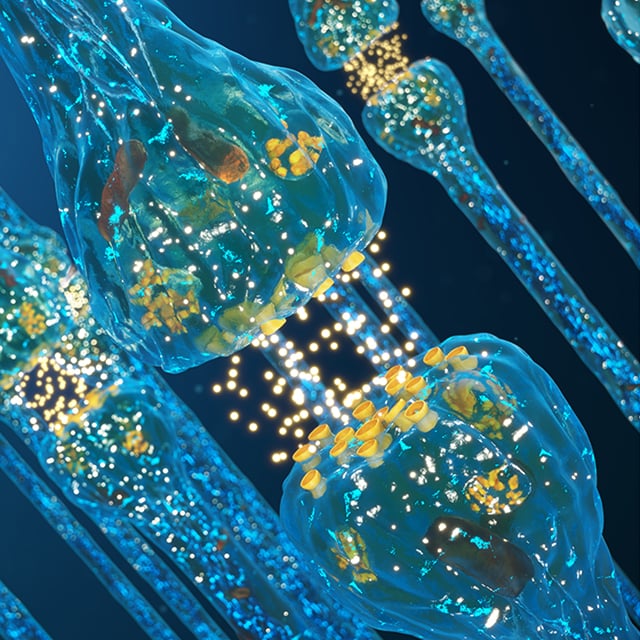Feeling at home
From bedside bingo to therapy dogs, we're here to help kids smile and feel more like themselves.
Visit Child Life services

Acute Disseminated Encephalomyelitis (ADEM) is a neurological disorder that causes a short and sudden inflammatory attack in the brain and spinal cord. This attack damages the myelin sheath — the fatty tissue that protects nerve cells in the same way that insulation protects electrical wiring in a house. Myelin also helps nerve fibers conduct electrical impulses to and from the brain. Conditions that cause damage to the myelin sheath are called demyelinating disorders.
ADEM is the most common demyelinating disorder in children. The condition may occur after a child has a viral infection or after vaccination for measles, mumps or rubella, though in some cases, there is no proceeding cause. The prognosis for children who develop ADEM varies. In many cases, with proper treatment, recovery begins within days of the attack.
Our Regional Pediatric Multiple Sclerosis Center specializes in the care of children and adolescents with ADEM and related demyelinating diseases.
Symptoms of acute disseminated encephalomyelitis, or ADEM, are similar to multiple sclerosis. As a result, the disease is often misdiagnosed as a severe attack of multiple sclerosis. There are key differences, however, between the symptoms of ADEM and MS, which can be recognized by a neurologist.
Initial symptoms of ADEM occur quickly and intensely as a single, short-lived attack, though some children experience recurrent episodes over a period of months. Symptoms may include:
Changes in your child's consciousness — such as seizures or in severe cases, coma — as well as behavioral changes such as irritability are also likely.
Other symptoms are caused by myelin damage and include:
An accurate and early diagnosis of acute disseminated encephalomyelitis, or ADEM, is critical in the management of your child's disease and quality of life.
In making a diagnosis, your child's doctor will first conduct a thorough physical examination, asking about symptoms your child is experiencing, including when they started and how they've eased or progressed over time. Your child's doctor also will record a full medical history, including information about your immediate and extended family.
Next, a series of tests will be conducted, including magnetic resonance imaging (MRI) of the brain and spinal cord to look for lesions, or areas of damage that may indicate ADEM and rule out other disorders such as multiple sclerosis. An MRI scan is a non-invasive procedure that uses powerful magnets to construct clear, detailed pictures of the brain and spinal cord tissues.
Recent brain lesions are more typical in ADEM, but can also occur in multiple sclerosis.
Old "inactive" lesions usually indicate multiple sclerosis, which often causes brain lesions before symptoms become obvious.
Your child also may have a lumbar puncture or spinal tap to determine if there are abnormalities in the cerebrospinal fluid or CSF.
CSF is the fluid that bathes, cushions and protects the brain and spinal cord. It flows through the skull and spine in the subarachnoid space, which is the area inside the arachnoid membrane. Typically, in ADEM, a child's CSF contains elevated levels of white blood cells and protein.
A diagnosis of ADEM is based on an evaluation of your child's symptoms along with the physical exam and test results.
Children and adolescents with acute disseminated encephalomyelitis or ADEM receive treatment at our Pediatric Multiple Sclerosis Center. Our experts specialize in ADEM and related diseases and work with each child to develop a unique treatment plan, including long-term follow-up care specifically tailored to his or her needs.
When necessary, we collaborate with other specialists at UCSF or elsewhere to ensure your child receives the most comprehensive care possible. Because we are part of an international network of six pediatric MS centers sponsored by the National Multiple Sclerosis Society, we have access to the latest information, research and treatments.
The majority of children with ADEM will respond partially or completely to corticosteroid therapy, which diminishes symptoms by suppressing inflammation in the brain and spinal cord.
If corticosteroids fail, other treatments may be prescribed including:
Your child's treatment may include other medications to treat symptoms as well as supportive care to help your child recover both physically and mentally, which may take weeks to months.
Some children experience problems with their memory, especially short-term memory. They also may experience emotional disturbances.
Rest alternated with mental and physical exercise is recommended for your child's rehabilitation. Our team of experts includes a physical therapist, speech therapist and neuropsychologist who will work with your child to recover.
UCSF Benioff Children's Hospitals medical specialists have reviewed this information. It is for educational purposes only and is not intended to replace the advice of your child's doctor or other health care provider. We encourage you to discuss any questions or concerns you may have with your child's provider.


One of the nation's best for neurology & neurosurgery

in NIH funding among U.S. neurology programs

Ranked among the nation's best in 11 specialties
Feeling at home
